
BRISTOL'S UNITARIAN CHURCHES
by Neil Marchant (with minor revisions)
LEWINS MEAD
Lewins Mead is the mother congregation to all the chapels in the area. Like many early Unitarian churches it began as Presbyterian and was founded in 1662. The congregation was extremely wealthy and included some very prominent city figures in the congregation.
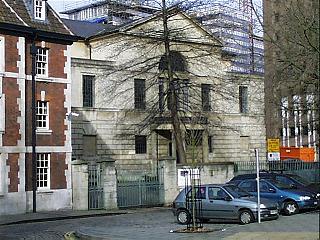 |
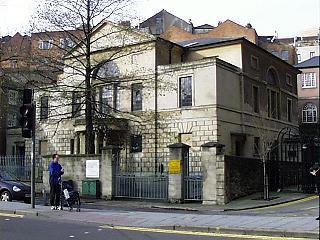 |
The chapel needed rebuilding at the end of the 18th cent and the result was a very unusual and magnificent chapel designed by William Blackburn in 1787 whose specialty was oddly prisons. The exterior with its portico is truly unique. It is square in plan but has a hipped roof but the entrance wing has its own large pediment with a tripartite window above a semi circular portico. The other sides of the chapel have tripartite windows too. The interior was good as well. Naturally it had galleries on three sides but these did not really impede on the central open space which has a large plaster ceiling suspended on chains. The woodwork in the chapel was good with pews in the Oxford college fashion facing each other. It has a excellent tall communion table with a curved stair case and a tester. Later an organ was placed in the west gallery and the narthex altered in 1891. During this period the chapel became associated with Ram Roy, a Hindu visitor to Bristol who sadly died here and had a memorial placed in the chapel. He is buried in Arno's Vale Cemetry in Brislington. The church during this period also had a mission in Marmaduke Street which was destroyed during the war but may have closed earlier. Above the church was a manse and rooms tucked infront of a tall cliff.
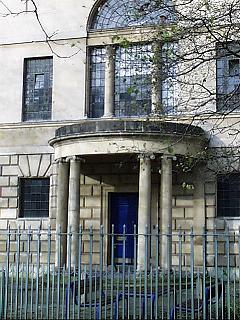 |
Sadly the church was closed in the late 1980’s although it had been threatened for many years. A office design group bought the church and under strict guidelines restored it. The original colour scheme was re-created and the pulpit and some pews remain. I think on the whole it has been a success although to be honest the interior should have merited keeping in it’s entirety. Foonote: the chapel stands in a prominent position on a dual carriageway, something never intended as Lewin's Mead was one of the darkest narrowest streets in the City Centre (demolished 1960s/70s). The small yellow sign in front of the chapel in the pictures above is offering the "offices" for sale. Once again the position of the church gives cause for concern (Phil Draper:28th Jan. 2001) |
FRENCHAY CHAPEL (South Gloucestershire)
This is another Presbyterian foundation chapel. It has a unusual appearance for it’s date because of the entrance tower which is a landmark on Frenchay Common. This village has always been fiercely Non-Conformist without an Anglican church until 1834. The Quakers were the dominant force here. However the Presbyterian church was first on the scene in about 1760 although no one is exactly sure when. The earliest minister was Joseph Tyler. There is also a trust deed of 1691 although as the church leaflet points out it does not deal with land. However tests on the roof structure showed a date of 1680 which sounds about right. The most famous feature of the chapel is the Burial stone which was laid on to newly dug graves at the chapel to stop stooges of Bristol surgeons recovering the bodies for research purposes. It is hard to describe the style of the chapel. Although the tower is generally supposed to be newer than the main chapel structure I think it’s features are no later than early 18th cent and looks like the kind of debased vernacular which was common at that time. The tower is of three stages with a very small spirelet on top and weather vane of Haley’s comet. In the tower was a bell with the inscription “when you hear me ringing come and praise the lord recast 1750.” I guess the tower is similar to Cradley Unitarian chapel (altered 1860’s). The body of the chapel is square in plan although it has two hipped roofs. The windows below are of the circular sashed type and look like a later replacement of older windows.
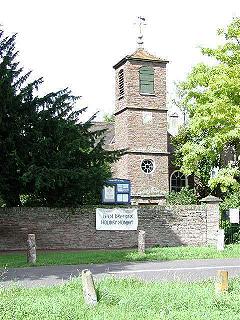 |
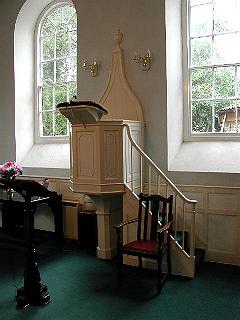 |
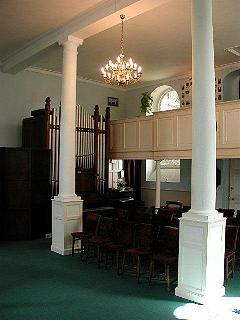 |
The interior of the church is quaint. There is a west gallery and a flat plaster ceiling and a pulpit which is built into the east wall. The organ was brought to the church from Combe Martin in Devon in 1984. From 1960 to 1980 the church was closed but very happily the church was re opened in 1980 and restored lovingly by locals.
OAKFIELD ROAD, CLIFTON
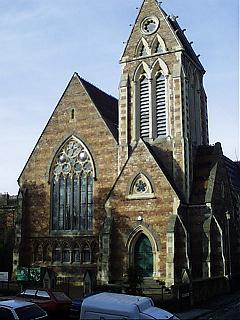 |
Oakfield Road Unitarian church was built in 1864 for the wealthy new Unitarians of Clifton to save them the walk down to Lewins Mead. The church is a particularly fine example of a mid-Victorian church and an example of how far Unitarians had moved towards Anglican design. It was designed by Pope and Bindon who were prolific Bristol architects. Oakfield road cost £6000 and was opened with much pomp and ceremony and even had it’s consecration captured in verse by a local army major. The style here is cusped decorated. The church is cruciform with a fine saddleback tower with tall belfry windows and a gabled entrance below. The church is built of Clifton ragstone which is orange in colour Durdham Down quarry. The west window is large with arcaded niches below . The nave has blind rerearches which have two light decorated windows below. This is repeated in the south aisle. The chancel is distinct from the nave and has a south and north transept. | 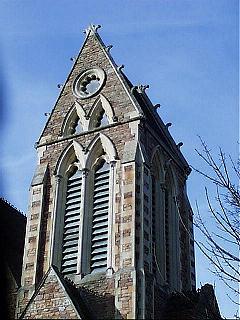 |
The interior of the church was particularly good. The nave had six Aberdeen marble piers with richly carved capitals. Above the arcades were spandrels filled with Devonshire marble and a roof resting on marble corbel shafts . The roof itself was a lovely cusped 14th cent type rather like one of Gilbert Scott's. The pulpit was circular and was placed in the Anglican fashion on the north side. The chancel had poppy headed stalls and an altar and a blue rib vault of plaster above. The east end had a window by O’ Connor showing the Last Supper. The south transept was a ‘singers galley’ which really was an opening with stalls on it - very unusual. The North transept consisted of ministerial vestries and the organ chamber. The church closed in the mid 1980’s and its congregation were determined to demolish it and build a new block of flats on the site with part of it used as a church. Thankfully this was thwarted and the church was saved as a ‘excellent example of a Victorian church.’ The conversion to offices was sympathetic to the exterior - yet the interior has had new mezzanine floors put in and generally whitewashed and not a lot survives. The church has never received the attention by Bristol architecture writers, given that it is of such a high standard. |
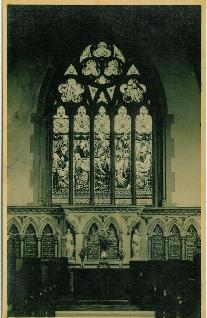 |
BRUNSWICK SQUARE CHAPEL
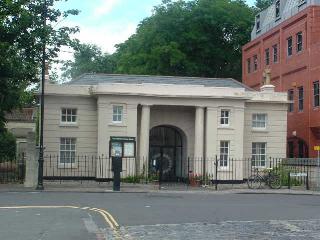 |
A new chapel was opened in 1992 in Brunswick Square for the Lewins Mead congregation. It is situated in the old lodge which was part of the Unitarian grave yard which still exists if you go through the walkway at the side of the chapel. Originally the congregation was looking to move into an office block. At Brunswick Square the lodge has been tastefully restored and enlarged to form a new meeting house. The old lodge in Grecian style serves as church rooms. The newly built chapel is like a tent like structure inside and is one large unimpeded space with a new organ. The best feature of the church are the etched circle of hands on the glass entrance doors. |
Page updated 4th November 2005